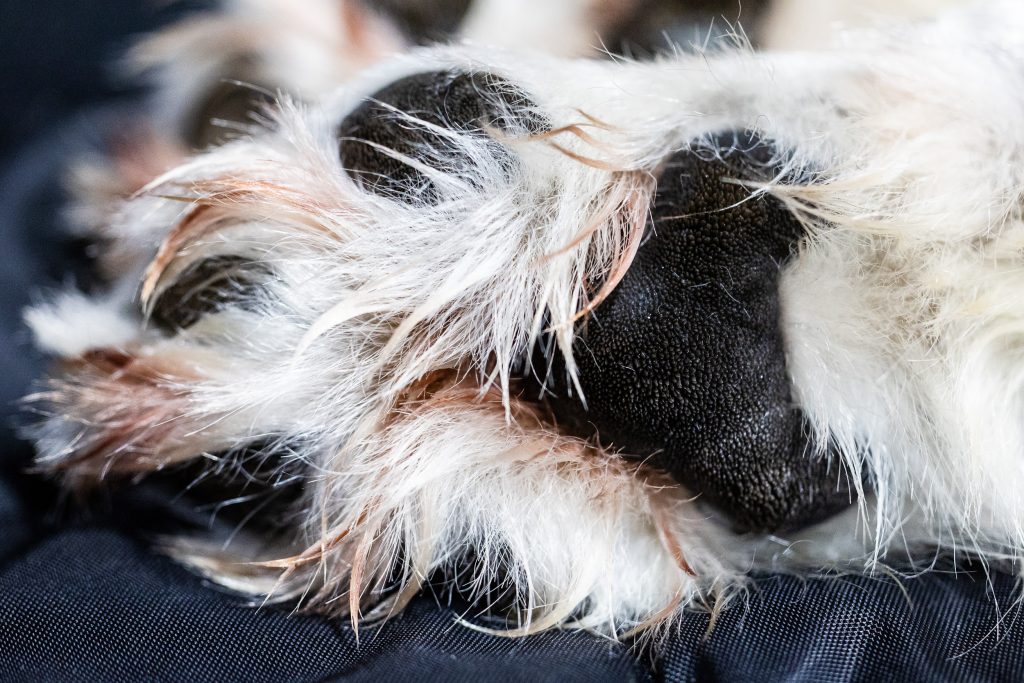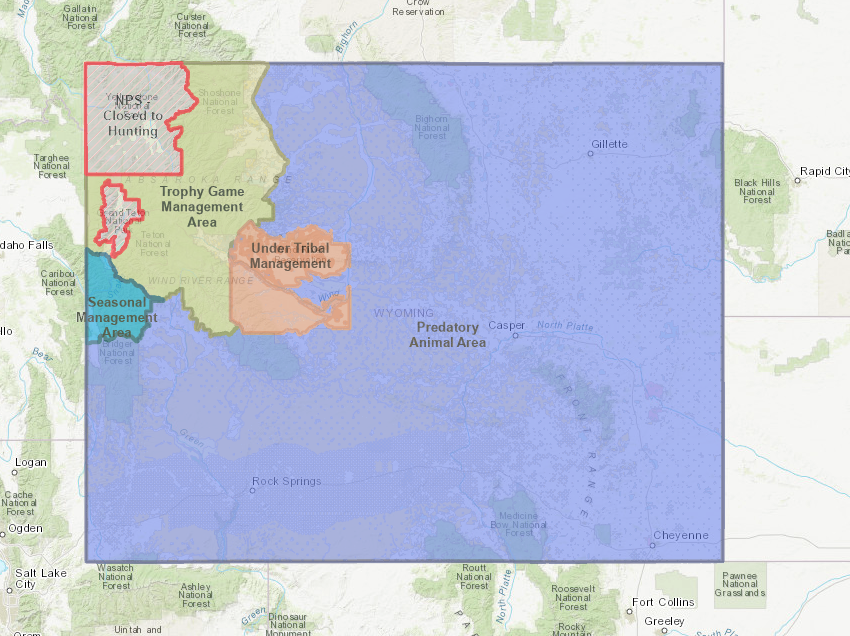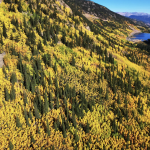Another of Colorado’s wolves has died after traveling into Wyoming
In Wyoming, wolves lose federal protections and fall under different state rules

Colorado Parks and Wildlife/Courtesy Photo
One of Colorado’s female gray wolves died in July after traveling to Wyoming. This is the third of the state’s reintroduced wolves to die in the neighboring state, where federal protections and state law differ from Colorado.
On Wednesday, Aug. 6, Colorado Parks and Wildlife confirmed that it became aware of the wolf’s death on July 24 in Wyoming. The female wolf, 2304, was one of the wolves brought to Colorado from Oregon in December 2023.
While wolves in Colorado are protected under the federal Endangered Species Act — making it illegal to kill or harass the animals, except with federal permission or in circumstances allowed under the state’s special rule from the U.S. Fish and Wildlife Service — they lose these protections when they travel north in Wyoming.
Gray wolves were removed from the Endangered Species Act in 2017 in Wyoming and other Northern Rocky Mountain states after restoration efforts in the region.
As such, the vast majority of Wyoming falls under the Wyoming Game and Fish Department predator control rules. In this area — which includes around 85% of the state, including the portion bordering Colorado — wolves can be killed at any time without a license.
Wyoming state law protects the identity of hunters who kill wolves legally in the state. In compliance with this law, no other details of the female wolf’s death are being shared, Parks and Wildlife said.
“(Colorado Parks and Wildlife) has no further comment on the mortality as it took place outside of Colorado,” said the agency in its media statement.

This marks the ninth death of Colorado’s reintroduced wolves. In addition, one of the yearlings born to the Copper Creek Pack was killed by Parks and Wildlife in Pitkin County in May following repeated livestock attacks.
While one death remains under investigation by the Fish and Wildlife Service, this number has included three deaths from natural causes, relating either to conflict with other wolves and mountain lions.
The remainder have been related to human activity, including a death caused by a gunshot wound, one occurring after a legal coyote trap trapped the wolf, and three that died after traveling into Wyoming.
On March 16, a male wolf was killed by the U.S. Wildlife Services in north-central Wyoming. The federal agency killed the wolf after it was tied to the death of five sheep.
Gray wolves are currently federally listed under the Endangered Species Act in Colorado. As such, when a wolf dies in the state, the necropsy and investigation into the death are performed by the U.S. Fish and Wildlife Service. Initial results from necropies have taken anywhere from 1 month to 4 months to be released by the federal agency.
April 18, 2024: The U.S. Fish and Wildlife Service confirmed the death of a male wolf in Larimer County. Initial necropsy results from the federal agency, released in May, indicated that a mountain lion attack was likely the cause of death.
Sept. 3, 2024: Four days after being captured and placed in captivity, the Copper Creek pack’s adult male wolf died from injuries sustained in the wild. The wolf was reported to be underweight, have wounds on its right hind leg as well as an infection related to the injury.
In January, Fish and Wildlife released the initial necropsy results, reporting that a gunshot wound was responsible for the wolf’s “poor condition” and death. As it is illegal to kill or harm a wolf in Colorado, the death is still under investigation by the federal agency.
Sept. 9, 2024: A male wolf died in Grand County. In November, the Fish and Wildlife Service reported that the initial necropsy results suggest the death was likely due to a fight with another wolf. The report also showed that the wolf had an old, healed gunshot wound.
March 16, 2025: A male wolf was killed by the U.S. Wildlife Services in north-central Wyoming. The wolf was killed by the federal agency after it was tied to the death of five sheep.
April 9, 2025: A male wolf was killed in Wyoming, where the species is delisted from the federal Endangered Species Act and state law allows anyone to kill a wolf in the majority of Wyoming without a license.
April 20, 2025: A female gray wolf died in Rocky Mountain National Park from a mountain lion attack.
May 15, 2025: A female gray wolf died in northwest Colorado. due to “an apparent secondary trauma from a lawful foothold trap used for coyote control,” according to an investigation.
May 29, 2025: Parks and Wildlife killed one of the male yearlings in the Copper Creek Pack in Pitkin County. The lethal action was taken after the pack was connected to multiple livestock attacks in the area over Memorial Day weekend, meeting the agency’s definition for “chronic depredation.”
May 31, 2025: A male gray wolf died in northwest Colorado. The Fish and Wildlife Service is still investigating the cause of death.
July 24, 2025: A female gray wolf died after traveling to Wyoming, the third to die in the neighboring state.
On April 9, a male wolf was killed in Wyoming. Similar to the July death, Wyoming state law prohibited any additional details of the death from being released.
The Endangered Species Act status of wolves in Wyoming and the other Northern Rocky Mountain states could be revisited after a federal judge in Missoula ruled on Tuesday that the Fish and Wildlife Service must reconsider a petition that it previously denied. The petition, submitted by several conservation groups, asked the agency to relist gray wolves in the region.

Support Local Journalism

Support Local Journalism
As a Summit Daily News reader, you make our work possible.
Summit Daily is embarking on a multiyear project to digitize its archives going back to 1989 and make them available to the public in partnership with the Colorado Historic Newspapers Collection. The full project is expected to cost about $165,000. All donations made in 2023 will go directly toward this project.
Every contribution, no matter the size, will make a difference.










